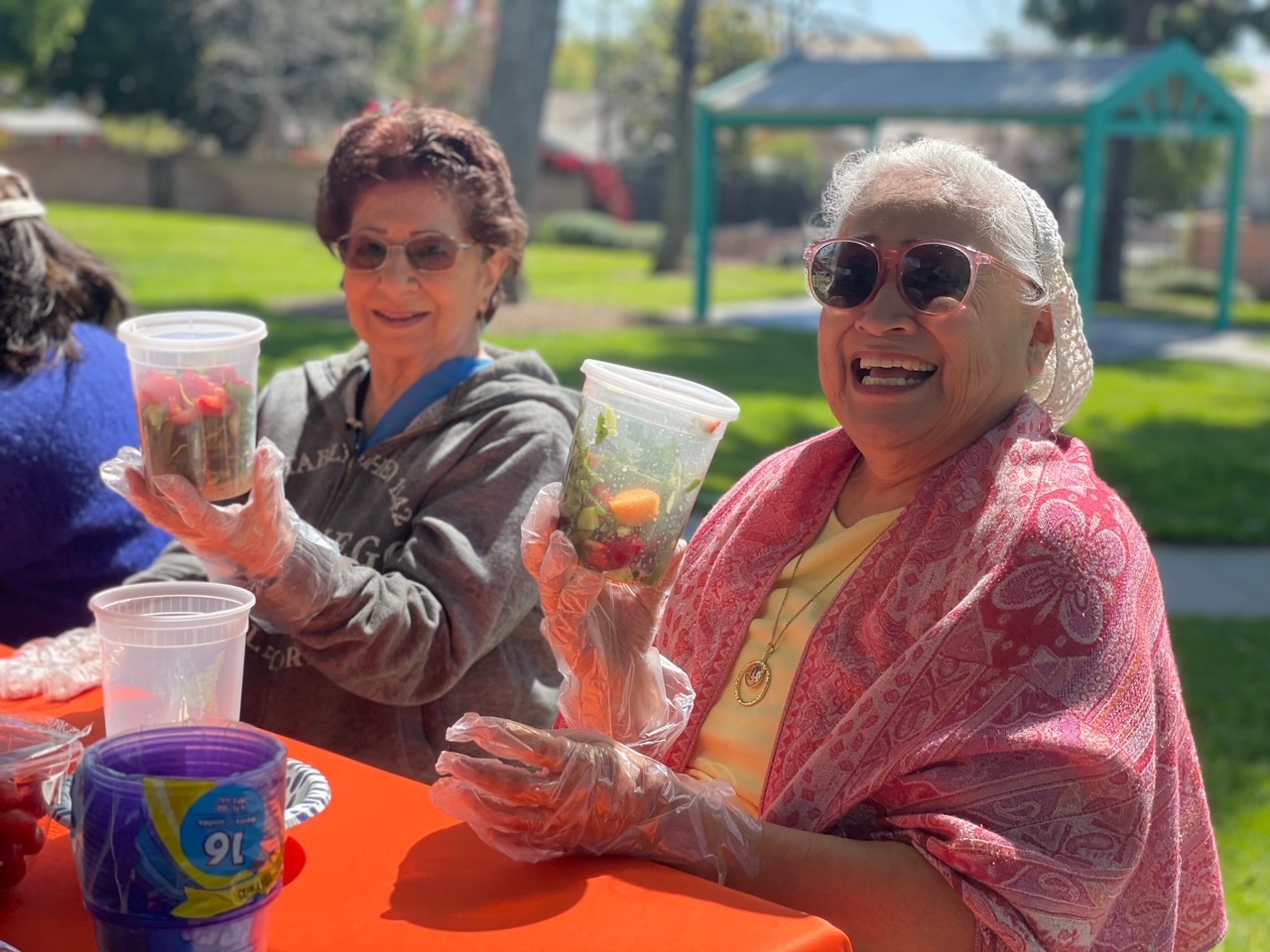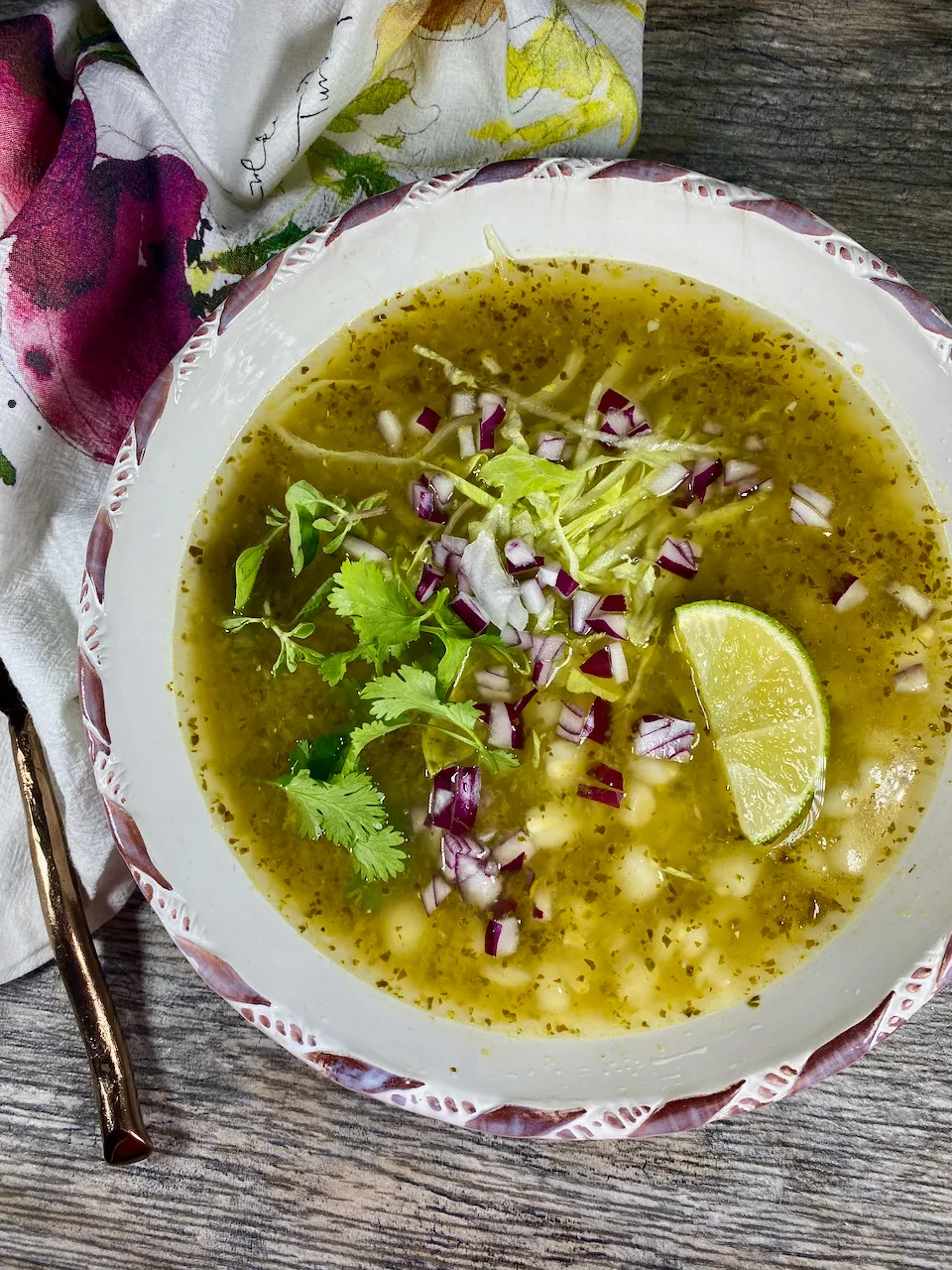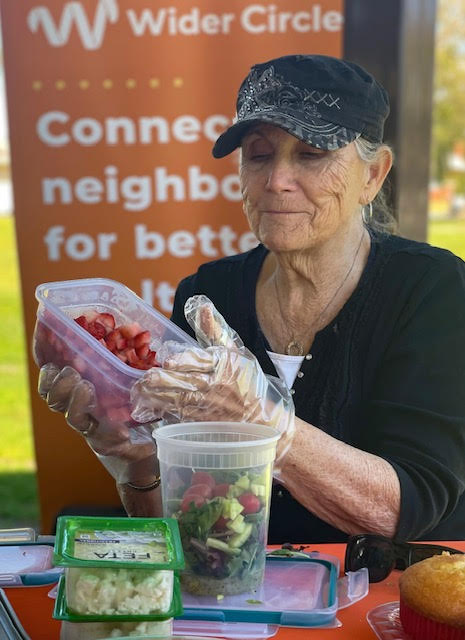
Keto. Paleo. IF (intermittent fasting). These days, it’s easy to feel overwhelmed by the alphabet soup of diet and nutrition trends. Over the course of this National Nutrition Month, Wider Circle groups across the country have been discussing the importance of nutrition on overall health and well-being, and members from age 30 to 90 agree: Diet trends can be expensive and confusing; most of us don’t want to give up eating the things we love; and we aren’t crazy about complicated recipes. The good news is, according to Diane Grabowski-Nepa, a registered dietitian for Optum Health, making good food choices and maintaining a healthy weight for long-term health benefits is possible for everyone – it’s just a matter of remembering the basics, making a few small changes at a time, and sticking to them! No expensive diet plans necessary.
We also included a few simple, favorite recipes from Wider Circle members to get you started!
7-10 servings of fruit and veggies a day is easier than they say
Eating more fruits, vegetables and plant-based meals is extremely important for heart health, as well as keeping our cholesterol and blood pressure in check. “7-10 servings a day may sound like a lot, but one serving is only about the size of your fist,” said Diane. Here are some ways to sneak in nutrient-packed fruits and vegetables throughout the day:
- Add blueberries to your oatmeal, extra tomatoes to your sandwich, and/or spinach to your egg white omelet.
- Aim for 4 or 5 vegetarian meals per week. You don’t need to become a vegetarian, but you can include plant-based meals to your weekly menu plan.
- Cutting down on your animal protein and increasing plant protein can help lower your LDL (bad) cholesterol. Great vegetarian meals include vegetarian chili, veggie pizza, or bean-based pasta with marinara sauce (fold in your favorite vegetables such as onions, garlic, spinach, zucchini, broccoli – you won’t even notice the difference from your flour-based pastas).
Enjoy beans 4-5 times per week – any kind will do!
Except jelly beans, of course. “Beans, peas and lentils can help lower cholesterol. They are a great and inexpensive source of plant protein, fiber, and valuable vitamins and minerals,” said Diane. “If you use canned beans, be sure to rinse and drain them to lower sodium intake.” Here are Diane’s favorite bean-y snacks:
- Snack on hummus with baked whole grain pita chips, steamed edamame beans with a squeeze of fresh lemon, or warmed black beans with salsa.
- Top lentil soup with a dollop of nonfat Greek yogurt (it tastes just like sour cream, without the fat).
A saturated fat substitute a day can keep the doctor away
Eating too much saturated fat can raise LDL cholesterol levels, increasing your risk of heart disease and stroke. “It’s best to reduce your overall fat intake and swap saturated fats for unsaturated fats,” advised Diane. Incorporate these tricks into your meal plan:
- Substitute whole milk dairy products with nonfat or low-fat dairy yogurt. Top with heart-healthy flax seeds or fresh fruit.
- Did you know that one tablespoon of coconut oil contains 12 grams of saturated fat? That’s double the saturated fat of a quarter pound burger! Try olive or canola oil instead.
- Aim for 3 servings of oily fish per week – such as salmon, sardines and mackerel. They are loaded with heart-healthy Omega-3 fats.
About Diane

Diane Grabowski-Nepa is a Registered Dietitian with a Master’s Degree from Clemson University, South Carolina. Diane has been educating individuals and groups on heart health, diabetes, weight management, preventative health and nutrition for over 30 years. Currently, Diane is a dietitian with Optum Health and enjoys helping patients change their lifestyle by making better food choices for improving their overall health and well-being.
_________________________
HEART-HEALTHY RECIPES FROM AROUND THE GLOBE
Part of the joy of eating well is sharing favorite recipes with others and trying out foods from other cultures. Try one of these delicious and nutritious crowd pleasers:
Portuguese Kale Soup — submitted by Tony Benito, Wider Circle Member Ambassador
“Every time I make this Portuguese soup, it brings back memories of laughing around the table with my family at dinner time. We often had this soup because it is easy to make, quick to cook and inexpensive. I hope you enjoy it, too!” (Tony)

Ingredients
· 1/3 of a whole chicken
· 2 carrots, sliced
· 1 onion, sliced
· 2 celery stalks, sliced
· 6 kale leaves, broken into pieces
· Salt (to taste)
Directions
In a pan, cook the chicken in water with salt (to taste). Use enough water to cover the chicken, then add that same amount of water on top.
Once the chicken is cooked, remove the chicken pieces and leave the broth in the pan.
Add the vegetables to the broth and cook over medium heat.
While the vegetables cook, remove the skin and bones from the chicken and shred the meat into small pieces.
Once the vegetables are cooked, add the chicken to the pan and remove it from the heat.
Pozole Verde Saludable (Healthy Green Soup) — submitted by Carmen Garcia, Wider Circle Member Ambassador
“I took my family’s recipe and substituted the animal fat for olive oil. This is a common Mexican dish for birthdays or Christmas Eve.” (Carmen)

Ingredients
· 19 cups water
· 2 1/2 pounds bone-in chicken breast
· 1 large onion chopped, divided use
· 3 cloves garlic
· 1 can (13 ounces)tomatillos, rinsed
· 1 jalapeño pepper, without stem
· 1 poblano pepper, roasted, peeled and seeded
· 1 cup chopped fresh cilantro
· Bone broth
· 1 tablespoon olive oil
· 1 can (29 ounces) hominy corn, rinsed and drained
· 1 teaspoon dried Mexican oregano
· 1/4 teaspoon cumin seeds
· 1 head iceberg lettuce, shredded
· 8 radishes, thinly sliced
· 2 lemons, quartered
Directions
Combine 16 cups of water, chicken, 1/3 cup of onion, and 2 cloves of garlic in a large pot. Cook over medium heat for 35 minutes. Remove from heat; let it cool.
Remove the chicken from the pot. Discard bones and skin; shred chicken meat into small pieces.
Strain chicken broth; reserve and set aside.
Place the tomatillos, jalapeños, and remaining 3 cups of water in a medium saucepan. Boil for 10 minutes or until the tomatillos turn dark. Discard the water.
Place 3 cups chicken broth, tomatillos, jalapeño pepper, poblano pepper, 1/3 cup cilantro, 1/3 cup onion, broth and remaining garlic clove in blender; cover. Blend until smooth.
Heat chicken broth over medium heat; add the hominy corn. Add the oregano and cumin. Boil for 15 minutes; add the tomatillo sauce and boil for 15 minutes. Add the chicken during the last 5 minutes of boiling time.
Serve with lettuce, radish slices, remaining cilantro, remaining onion, and lime juice.
Salad in a Jar — submitted by Elizabeth Pino, Wider Circle Community Engagement Lead
“I love making this Strawberry Poppyseed Salad recipe with my Wider Circle group, but you can experiment with other fruits, veggies and low-calorie dressings as well!” (Elizabeth)

Ingredients
For the Salad:
· 3/4 cup raw pecans (optional)
· Fresh fruit
· 10 ounces fresh spinach or mixed spring salad
· 1-quart strawberries hulled and quartered (about 1 pound)
· 3/4 cup crumbled feta or cotija cheese
For the Poppyseed Dressing:
· 1/4 cup balsamic vinegar
· 3 tablespoons extra-virgin olive oil
· 1 1/2 tablespoons poppy seeds
· 1 1/2 tablespoons honey
· 1/2 teaspoon Dijon mustard
· 1/2 teaspoon kosher salt
· 1/8 teaspoon black pepper
Create Layers Start with the salad dressing on the bottom as the first layer. For the dressing, use 1-2 tablespoons of extra virgin olive oil or avocado oil with lemon juice.
Then add spices depending on the salad type.
Add Protein The next layer is usually vegan protein, such as chickpeas, hemp hearts or flaxseed. For a fiesta salad, use black beans and corn.
Pile on the Veggies On top of that, use about one cup of raw veggies. Chopped cauliflower, broccoli, cucumbers, tomatoes or avocados work great here!
Finally, load up as much romaine lettuce, spinach, cabbage or any type of greens, usually about 2 cups.
Tighten the lid and store in the refrigerator until ready to eat.
Shake it Up When it is time to eat, shake up the salad and enjoy! If you find it difficult to get a fork in the mason jar, pour the salad onto a plate or into a bowl.
_________________________
Ready for more nutrition tips? Download this infographic from Wider Circle and Optum Health


